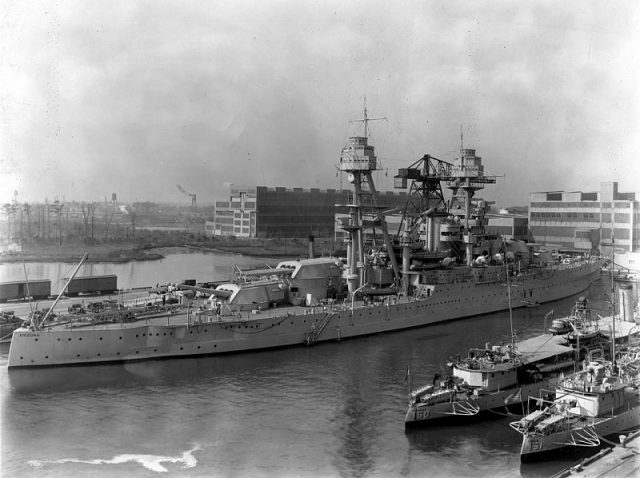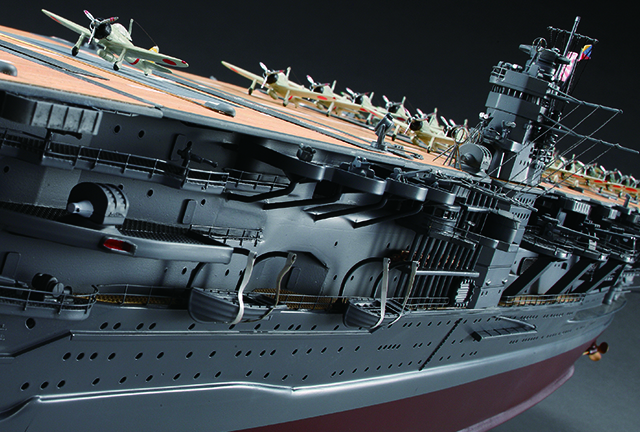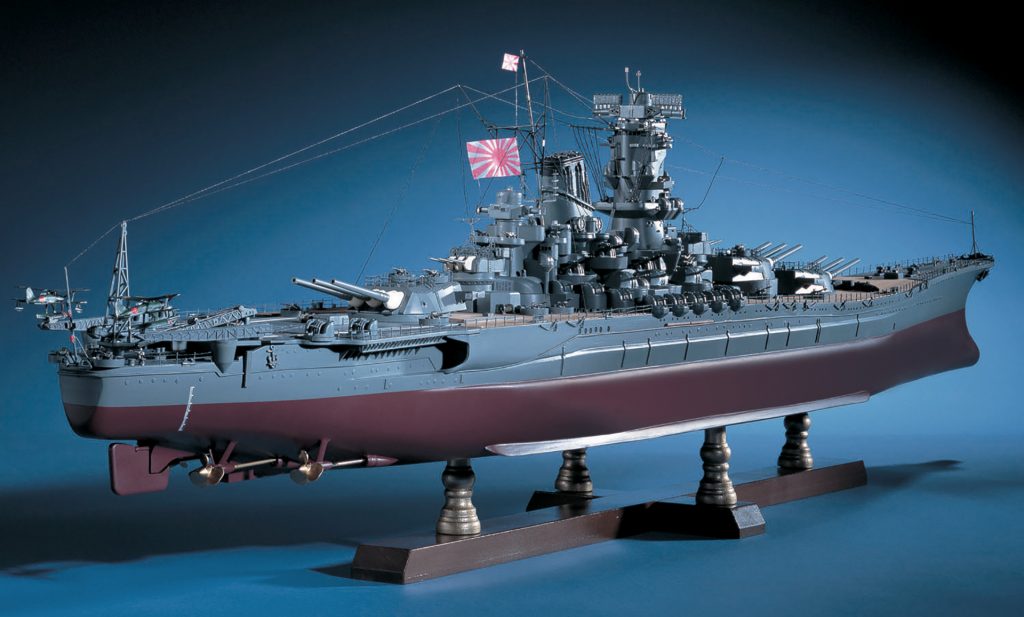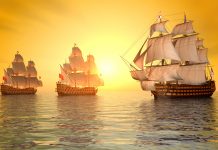Battleship History – 75th Anniversary of a Warfare Landmark
Through the 19th and early 20th centuries, battleships were the dominant force on the sea, and battleship fleets were considered a necessity for nations hoping to command the water. But that all changed on the 10th December 75 years ago, on a day many consider a landmark in warfare. To recognise and honour this 75th anniversary, we have prepared a summary of the events that led to this momentous shift in the battleship’s history.
Everybody knew that only another battleship could sink a battleship
For centuries prior, the battleship was a clear symbol of military prestige and gravitas for the nation whose flag it flew, and so the thinking remained at the beginning of the Second World War. Winston Churchill once mused that “there is nothing like having something that can catch and kill anything”. Everybody knew that only another battleship could sink a battleship. Well, almost everybody.
In 1921, American General William “Billy” Mitchell staked his career on his theory that battleships were vulnerable to air attack. In retrospect it might seem obvious, but Mitchell was not taken seriously by many people. Aircraft hadn’t existed only 20 years earlier, and although they matured from contraptions which could barely lift their own weight to fighting machines during the Great War, they were still under powered and had a pitiful payload, constructed from wood, steel wires and fabric.
Mitchell succeeded in sinking captured German cruiser Frankfurt using US Air Corps biplanes
How could such a machine seriously threaten a floating fortress with steel armour many inches thick? Mitchell succeeded in sinking captured German cruiser Frankfurt using US Air Corps biplanes. Scepticism remained however, and people chose to consider that in real life, such an attack on a moving warship returning heavy anti-aircraft fire could never succeed.
Governments around the world continued to develop battleships. Churchill was convinced by the advice of Admiral Sir Tom Phillips, a great proponent of the capital ship, on the matter of the Japanese Empire that was unfolding in 1941.
In order to deter the Japanese Empire from expanding into British Empire territory in the far east, Churchill decided to symbolise the might of the Royal Navy, tasking Admiral Phillips to lead the assembled Force Z, consisting of WWI era Renown class battlecruiser HMS Repulse and King George V class battleship HMS Prince of Wales. The former was ageing but still a veritable and powerful vessel. The latter was the newest and arguably most modern battleship afloat, complete with state of the art anti-aircraft defences. The pair plus escorting destroyers arrived in Singapore on 2nd December 1941.

Archive photo of the USS Arizona
On 7th December 1941, the Imperial Japanese Navy executed with staggering results a surprise attack on the US Navy’s Pacific strong hold, Pearl Harbor. This attack sank the battleships USS Arizona and USS Oklahoma, and seriously damaged many more with great loss of life.
The man behind the attacks, Admiral Yamamoto had studied in the United States of American and was present there during Billy Mitchell’s experimental air attack. He also had witnessed the Royal Navy, ironically, carry out a similar attack against Italy’s Regia Marina at anchor in Taranto harbour 13 months earlier. Whilst a severe blow to the US Navy, the attack on Pearl Harbor was a surprise attack and denounced as an act of extreme cowardice. Still many senior government and naval officials considered that a battleship could not be sunk at sea, a moving target with anti-aircraft defences in operation.

ModelSpace 1:250 IJN Akagi scale model
The next day, on 8th December 1941, Admiral Sir Tom Phillips led Force Z in to the South China Sea to investigate reports of a Japanese invasion force. By now, a few were quietly concerned about a lack of air cover. Among those concerned about sailing into a superior force was Captain John Leach, captain of HMS Prince of Wales. Leach’s son, Henry, was at Singapore in December 1941 on shore. He recalled his father’s quiet apprehension and caution against complacency.
It became clear that Force Z was being shadowed by Japanese aircraft. On 10th December, having decided to return to Singapore, HMS Prince of Wales and HMS Repulse were attacked by wave after wave of Japanese level bombers and torpedo bombers.

ModelSpace 1:250 Battleship Yamato scale model
Following level bombing attacks with some relatively minor damage, HMS Prince of Wales was hit by a torpedo just above one of her propeller shafts, breaking the shaft free and causing significant damage. She went dead in the water and immediately began to list. Shortly afterwards, she was struck by 3 more torpedoes from the other side. Due to the list, these torpedoes passed under her thick armour belt and ripped open her hull near the keel, and she began to sink.
Steaming flat out, Captain William Tennant and his crew skilfully dodged numerous torpedoes
All remaining attention was now focused on HMS Repulse. Steaming flat out, Captain William Tennant and his crew skilfully dodged numerous torpedoes (some say as many as 19) by very aggressively manoeuvring; a technique known as “combing”. Finally, the Japanese attackers spread out in a star pattern and all converged on Repulse from different angles dropping their torpedoes at once. There is no way to comb that. One of Repulse’s crew saw a wake approaching and called out “This one’s got us”. Repulse was hit by multiple torpedoes in quick succession. She rolled over and sank in around 6 minutes.
327 men died on HMS Prince of Wales, with 513 lost on HMS Repulse. Amongst those who did not return were Admiral Sir Tom Phillips and Captain John Leach. Henry Leach learned of his father’s death ashore. The young officer eventually earned the rank of Admiral of the Fleet Sir Henry Leach, First Sea Lord, and was advisor to Prime Minister Margaret Thatcher on the United Kingdom’s response to the Argentine invasion of the Falkland Islands.
HMS Prince of Wales and HMS Repulse were the first capital ships to be sunk at sea by aircraft
HMS Prince of Wales and HMS Repulse were the first capital ships to be sunk at sea by aircraft whilst actively defending themselves, but were not the last, and indeed many more very powerful battleships were overwhelmed by the rise in air power, including the Deutch Kriegsmarine battleship Tirpitz, Regia Marina’s Roma and the Imperial Japanese Navy’s 68,000 ton behemoths Musashi and Yamato.
As mentioned above, the 10th of December marks the 75th anniversary of the day when battleships first succumbed to the superiority of a coordinated aerial attack while at sea. If you would like to learn more about Pearl Harbor, and want to see some excellent photos of the USS Arizona BB-39 1941 model kit being built by one of our talented modelers, check out the USS Arizona build diary on our forum.






